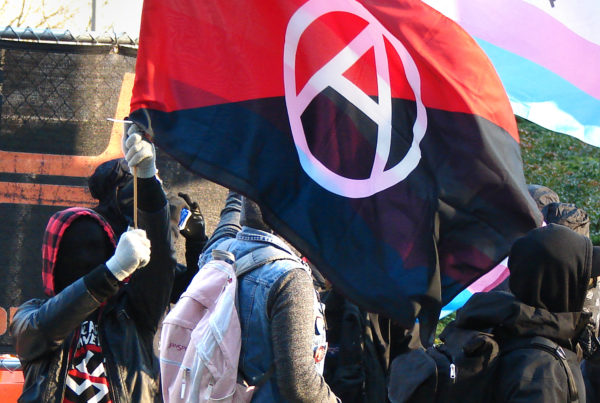Alternative Names:
IK, Imarat Kavkaz, Caucasian Emirate, CE
Location:
Southwestern Russia, Northern Caucasus within European Russia
Leadership:
The current leadership structure of the Caucus Emirate remains unclear.
The group’s founder and leader, Dokka Umarov, was killed in 2013. Six months later, Aliaskhab Kebekov was announced as Umarov’s successor, though he too was killed in a Russian special forces raid in April 2015.
Following Kebekov’s death, Magomed Suleimanov was appointed as the new leader of the Caucasus Emirate. In August 2015, Suleimanov was killed in a Russian special operations raid in the Russian republic of Dagestan.
It is yet unclear whether Suleimanov’s successor has been appointed.
Caucasus Emirate is described as a highly decentralized organization but structured hierarchically. The command cadre appoints leaders in each province who in turn pledge their allegiance to the leadership. Each province subsequently consists of multiple fronts, which in turn contain multiple operational units. Each tier within the organization is responsible for independently raising funds, recruiting supporters, and carrying out operations, in accordance with the overall strategy of the Emirate’s leadership.
Since November 2014, many provincial commanders and militants have pledged allegiance to the Islamic State/ISIS and its leader Abu Bakr-al Baghdadi. By late 2015, many of the militant groups operating in the North Caucasus had unified under the Islamic State’s Caucasus Province.
Membership:
Caucasus Emirate’s membership largely consists of militants from the Russian federal republics of Dagestan and Chechnya, located in the North Caucasus region.
Funding Sources:
Caucasus Emirate derives a vast amount of funding from numerous criminal activities, including extortion of businesses and residents in their areas of operation under the guise of a religious tax. In 2010, the group allegedly extorted at least $3.5 million USD from local businessmen.
Weaponry is readily available given the widely-observable ‘gun-culture’ of the North Caucasus. The group has traditionally acquired significant amounts of weaponry from former Soviet stockpiles, although these supply lines have gradually been exhausted. The black market has since become the group’s primary source of weaponry. Organized crime groups in Russia, Georgia, and Azerbaijan are also believed to be involved in the smuggling of arms to Caucasus Emirate militants.
Origins:
Caucasus Emirate was founded in 2007 by Dokka Umarov. The group is a partial successor to the secessionist Chechen Republic of Ichkeria, which was the unrecognized secessionist government of the Chechen Republic following the dissolution of the Soviet Union. In 2007, Umarov renamed the republic to Noxciyco proclaiming it a province of the Caucasus Emirate with himself as leader.
Major Attacks:
Since its creation in 2007, the Caucasus Emirate has carried out more than 900 terrorist attacks against the Russian Federation, killing more than 900 people and wounding more than 1,500 civilians, security forces, and government personnel.
May 15, 2009: Suicide bombing outside the Chechnya Interior Ministry
November, 2009: Attack against the Russian Nevsky Express high-speed rail train, which killed 28 people.
March, 2010: Dokka Umarov claimed responsibility for the Moscow subway bombings, which killed 40 people.
January, 2011: Bombing of the Domodedovo Airport, which killed 36 people.
May 2012: Suicide bombers detonated vehicle-borne IEDs near a traffic police checkpoint in Makhachkala, which killed 13 people and injured more than 130 others.
December 2013: Caucasus Emirate suicide bombers attacked mass transportation in the city of Volgograd, Russia, which killed 34 people.
December, 2014: Militants attacked a traffic police checkpoint outside the city of Grozny and subsequently occupied the press house building in the city centre, as well as a nearby school.
Ideological Roots:
The group traces its ideological roots to the independence movement from the Russian Federation, which has since become a front in the global jihadist movement. As the movement for Chechen independence faltered, insurgents increasingly sought to integrate Islamic ideology in order to expand the conflict and garner support and funding from the broader Islamic community.
Objectives:
Caucasus Emirate’s objective is to expel the Russian presence from the North Caucasus and to establish an independent Islamic emirate in the region in place of the Russian. Broadly, it seeks to establish a Taliban-style Sharia-based Islamist state on sovereign Russian Federation, Georgian, Armenian, and Azerbaijani territory.
Tactics:
Suicide attacks, bombings, improvised explosive devices (IED), Vehicle-borne IED, firearm attacks, assassination. Attacks primarily target state security forces, government personnel, and civilian soft targets.
Updated on December 10, 2015







